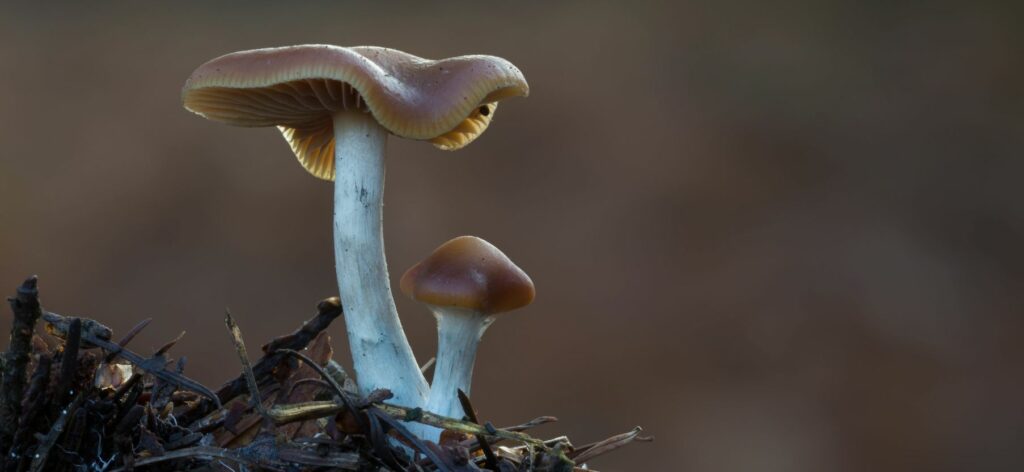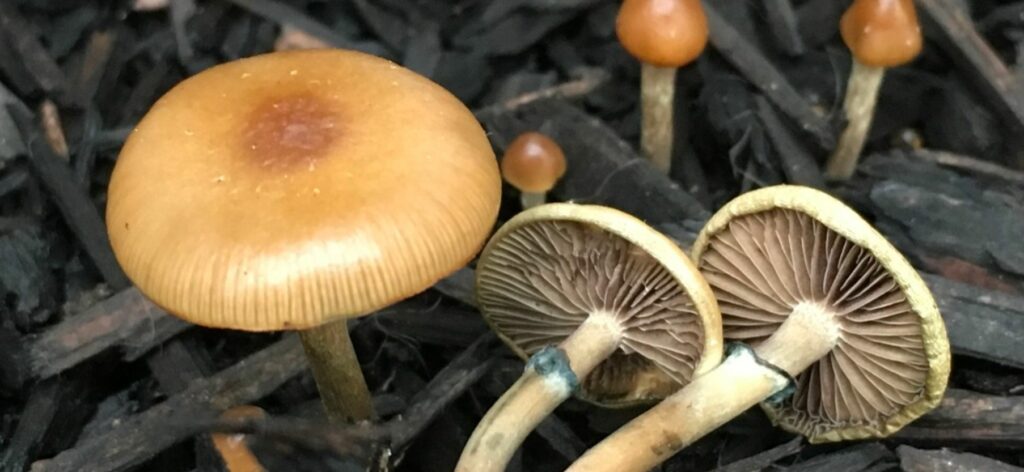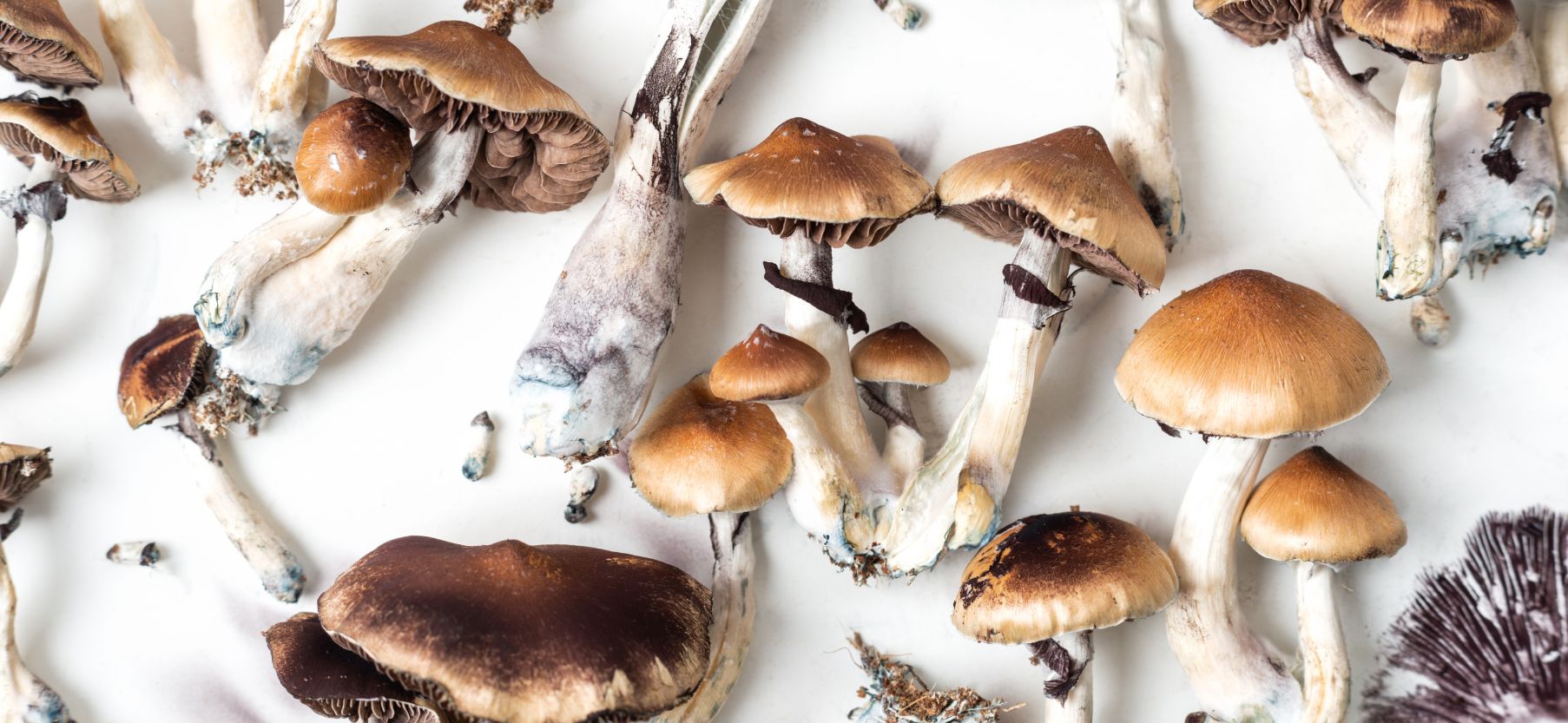There are nearly 200 psilocybin mushroom strains growing around the world, each with reportedly different effects. This guide will introduce you to popular strains you may have heard about, from the classic P. Cubensis to the rarer P. Tampanensis.
What is psilocybin?
Psilocybin is a naturally occurring psychedelic compound that is found in certain mushroom species. It is known for producing altered states of consciousness, visual and auditory hallucinations, and spiritual experiences. Psilocybin has been used throughout history by various cultures for religious ceremonies, healing rituals, and therapeutic purposes. Recent scientific studies suggest that psilocybin may have potential therapeutic benefits for a variety of mental health conditions, including depression and anxiety. The effects of psilocybin vary greatly from person to person, and the experience is often dependent on set, setting, and even the specific strain being consumed.
Psilocybe cubensis
Psilocybe cubensis is by far the most popular strain of psilocybin mushrooms. This species has a long history of use as a psychedelic substance, dating back centuries in Indigenous cultures in Mexico, Central America and South America.
The Latin name translates to “bald head”, referring to the smooth caps the mushrooms grow. Due in part to how easy they are to breed, there are at least 60 different varieties of psilocybe cubensis out there.
Penis Envy mushrooms, allegedly discovered in the Amazonian Rain Forest by Terrence and Dennis McKenna, are among the strongest varieties. Some estimates say they are 30-50% stronger than other P. cubensis strains. Another particularly resilient strain of psilocybe cubensis is the B+, also known for having an intense and psychedelic experience. It has a large cap with golden hues on top, and the stem is usually white.
The Golden Teacher are another popular variety, known for the euphoric and sometimes intensely visual experiences they’re said to provide. The mushroom strain is a fast colonizer with large, fleshy and thick-walled fruits with rounded, golden caps and sometimes wavy edges. Anecdotal reports of golden teacher’s effects claim they induce a slightly shorter trip than other strains, making them popular with those new to psychedelics. They are also said to lead to a more educational experience, hence the name.
Psilocybe semilanceata (Libery Caps)
Psilocybe semilanceata is a common strain of mushroom that grows wild across North America, Europe, and Asia. They are also known as “liberty caps” or “witch hats”, thanks to their conical cap shape. English naturalist and mycologist Mordecai Cubitt Cooke first described them in 1871.

They have a distinctive bell-shaped cap ranging from 1.5 to 3 cm in diameter, with an iconic, sharp tip at its summit.
Because they’re particularly difficult to cultivate indoors, most Liberty Cap consumption is the result of wild foraging. Proper identification is especially critical with this strain, as they bear resemblance to toxic fungal species including Cortinarius rubellus and Psathyrella.
Psilocybe cyanescens (Wavy Caps)
Psilocybe cyanescens is a potent strain of mushroom with a unique appearance. They are sometimes referred to as “wavy caps” due to their distinctive cap shape, created by their grooved cap margin.
Elsie Wakefield was the first to discover and document Psilocybe cyanescens in the western world back in 1946.

These mushrooms are known for their potency, making them an important psychedelic species among entheogenic enthusiasts.
With an average of 0.39 to 0.66%, the psilocybin content in Psilocybe cyanescens is approximately 30-60% higher than Psilcybe cubensis. Though it does contain slightly lower levels of psilocin (0.75-1.96%).
Psilocybe stuntzii (Blue Ringers)
Psilocybe stuntzii, also known as Stuntz’s Blue Legs or Blue Ringers, are relatively rarer in comparison to other strains. The strain is highly sought after by those who have experience using psilocybin mushrooms, likely due to its potency and particular psychotropic effects.

Psilocybe stuntzii have a light yellow to brown bell-shaped cap that flattens as the fungi matures. They have yellowish stems with a distinct blue ring, which gives them their common name.
This mushroom has two different forms, one found on the west coast of Pacific North America and the other on the east coast. Research suggests that this is because each region experiences different levels of precipitation, temperature, and elevation – factors that can significantly impact a fungus’s mature form. As a result, the Psilocybe stuntzii from each side of the continent has slightly different features.
Psilocybe tampanensis (Philosopher’s Stone)
Psilocybe tampanensis is often colloquially referred to as “philosopher’s stone” or “magic truffle”. They are a rare psychedelic mushroom first identified in Tampa, Florida by Steven Pollock in 1977.
They are small and yellow-brown, with a conical cap. The caps are up to 2.4 cm in diameter, with a thin stem and white flesh that bruises blue.

The part of Psilocybe tampanesis most commonly consumed is actually its sclerotium: the hard, dense, compact concentration of mycelium the mushroom produces at its base. The sclerotium does look more like a truffle than a mushroom, hence its “magic truffle” nickname, and reportedly produces a more “fun” trip experience, than the cerebral trips associated with psilocybe mushrooms.
A note on foraging
If you’re considering foraging for psilocybin mushrooms, it’s important to be aware of both the risks and rewards. With almost 200 different strains of psilocybin-containing mushrooms out there, it’s helpful to do some research ahead of time on what kind of experience you’re looking for. And as always when collecting wild plants, be cautious of toxic lookalikes. It’s easy to confuse psychedelic mushrooms for harmful ones, particularly for those newly interested in mycology.

